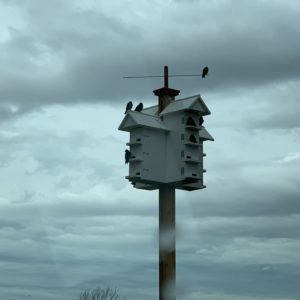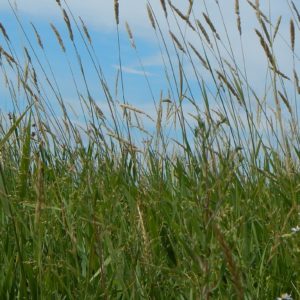The Collared Pika-Boo!
Called ‘rock rabbit’, ‘whistling hare’ and ‘coonies’ by naturalists, this collared pika greatly resembles a small rabbit, but one with very short ears and small limbs. The Collared Pika is small (15-20cm in length) with a chubby body and rounded ears. It has grey fur, a bobbed tail and long whiskers. They get their common name, Collared Pika, from the distinctive patch on the nape of their neck, which looks like a collar! The Collared Pika weights approximately 160g, which is less than 1 pound!
Pikas do not hibernate, so they do not store much body fat. To maintain their year-round active lifestyle they establish hidden food stocks in their territories. The Collared Pika is found in Alaska, British Columbia and the Yukon. They forage throughout the summer, collecting many different types of vegetation in their hidden stock. Once thought to be strict vegetarians, researchers found that their hidden stockpiles contains small songbirds that did not survive migration. After much analysis, it was found that they eat them as well. Collared Pikas are solitary animals, prefering to remain around 20-75m away from any neighbours. The Collared Pikas have a distinct sound (‘meep’) that marks their territory.
https://www.youtube.com/watch?v=D-5nIpqeiPo
For reproduction, Collared Pika’s locate their nearest neighbour to mate. They are considered monogamous, only because the men cannot cover and control enough ground to find more than one woman to mate with. Breeding occurs in May and early June. The females can have up to 2 litters per year, ranging between 2 to 6 young. The gestation period lasts 3 to 4 weeks (30 days) and the pikas reach adult size in 40 to 50 days. Both females and males are sexually mature by 1 year of age. The average life span is 6 years old.
where can it be found
The Collared Pika is located in remote areas, and so, humans do not pose much of a threat to the Pikas. Their main threat is climate change. This adorable species has already been extirpated (no longer found in the wild in some areas) over the last few decades due to changes in habitat conditions. The reason that climate change is affecting them most is because the high elevations that they are mostly found is witnessing rapid shifts in habitat and temperature, faster than anywhere else in Canada. The change in temperature is dangerous to the Pikas whose thermoregulatory ability have not adapted to the new temperature. Also, the change in freeze-thaw patterns affect their food storage, which is their reason for survival over the winter.
what needs to be done
What needs to be done, is to slow down the effects of climate change. This involves your best efforts, and the efforts of all your friends and family. By learning about climate change and how it is affecting this species, and by sharing this with your peers, you can help save the Collared Pika. The Collared Pika is listed as a Special Concern, which means that it requires close watch as it can become threatened or endangered at any point. The Collared Pika still has the potential to survive the threats that climate change is posing on them! But it is up to you to share this with everyone!



